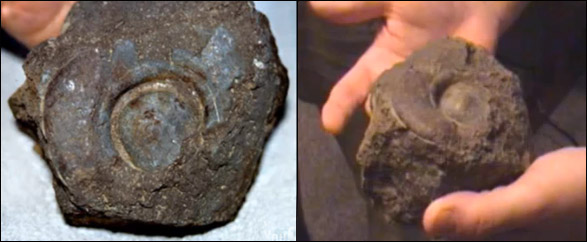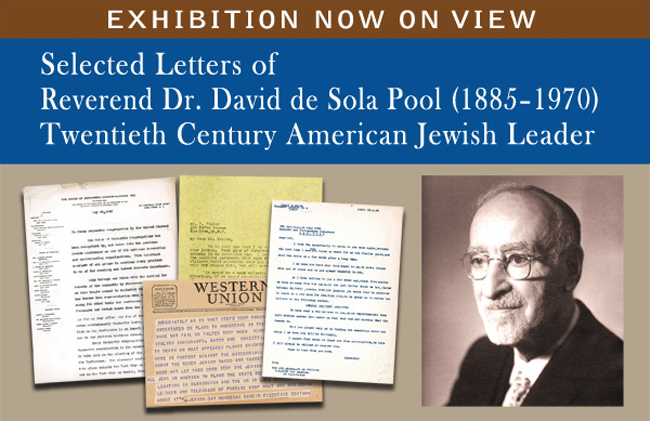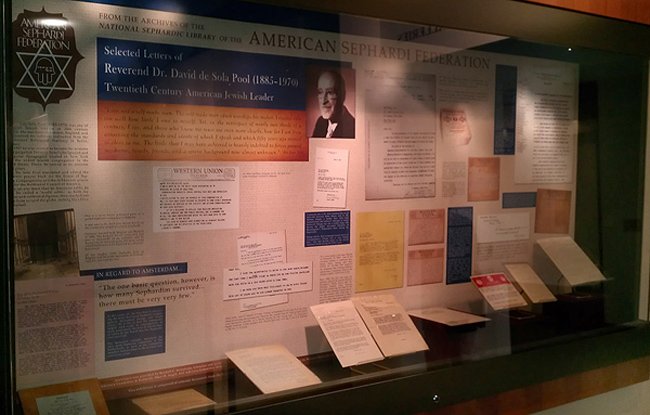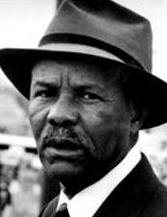|
Introduction
National
Park Service Goals
The
National Park Service is undertaking the preparation of the American
Latino Theme Study that will increase opportunities for the public
to learn about the role of American Latinos in the development of the
nation. As part of the theme
study, the National Park Service welcomes
suggestions from the public about American Latino historic places and
stories associated with them that could be added to the “study list”
that forms a part of the theme study. This is a noble purpose which is
welcomed and long overdue
The
NPS is also undertaking the long neglected need to attract Latinos to
our national parks; NPS studies find that Latinos are under-represented
national park visitors. It appears that after years of discussion on the
need to do something about the under-representation of Latino history and
the chronic low rates of Latino national parks visitors, and driven by
America’s large and growing Latino population, the NPS leadership is
beginning to seriously address these long standing inequities.
While this work begins to meet the NPS responsibility to the
Latino community it also meets its responsibility to insure a prosperous
and relevant NPS future. NPS visionaries understand that too meet these
responsibilities and secure the desired NPS future, it needs to
meaningfully engage the less engaged Latino community; I agree. Read
John Reynolds 40 year NPS veteran essay: Whose
America? Whose Idea? Making “America’s
Best
Idea” Reflect New American Realities (http://www.georgewright.org/272reynolds.pdf)
Essentially,
what Mr. Reynolds wants all of us to understand and accept for a
prosperous and relevant NPS future is this:
Although
the basis of the political relevancy that has served us (white America)
so well for a century is still strong, its vitality as a reflection of
our whole and evolving society is waning.
He goes on to say, All is
not lost . . . not yet. The National Park Service and its friends must
act now in a strategic, focused, comprehensive manner supported by every
park, every employee, and every organization the agency is associated
with. The Park Service and individual parks must expand their focus to
include people and organizations that have not been traditional allies
or partners. It is up to the Park Service, and its leaders, to lead. It
is up to the rest of us to actively assist. Our goal? Every American
believes that parks and the park idea are essential and relevant to
them. It is “we the people,” all of the people, that are the
strength of the parks and the national
park
idea.
The
theme studies and the Latino historic sites study list will include many
themes and historic sites for study that potentially can become national
historic sites/parks such as the Cesar Chavez National Historical Park (CCNHP)
The CCNHP will admirably meet one of the Latino community and NPS goals;
to address the underrepresentation of Latino history in the national
mainstream public history arena. However,
it should not be a foregone conclusion that the CCNHP or other proposed
similar Latino historic park venues will meet the NPS’s other
critically important goal to attract Latinos in significant numbers to
national parks, historic parks or other NPS facilities. I will present
ample evidence to support this position.
There is, however, a historic park venue that has the capacity to
meet both of the NPS goals. I
will describe the depth and scope of this historic park venue and
recommend that the NPS conduct a survey to identify Latino historic
sites with a venue that have the capacity to meet both its goals.
We
Built It But They Didn’t Come – In Significant Numbers
La
Plaza de Cultura y Artes' (LPCA)
The
new and beautiful La Plaza de Cultura y Artes' (LPCA) located in Los
Angeles, California a world class city with the largest Latino
population of any U.S. metropolis has not attracted a significant number
of Latinos or the general public. Given its location, its Mexican,
Mexican, American (MMA), Chicano provocative history, one would expect
that it would attract a large number of Latino visitors. Unfortunately,
LPCA to date has not attracted large numbers of Latino visitors.
The
LPCA leadership assumed it had a ready-made audience because LPCA was
located across the street from legendary Historic Olvera Street (HOS);
HOS enjoys nearly 2,000,000 million annual visitors the majority of whom
are Latinos. HOS visitors would
simply walk across the street and visit LPCA; this did not happen.
Since LPCA opened it has had 39,000 visitors, many of whom were
students. http://articles.latimes.com/2011/apr/11/entertainment/la-et-la-plaza-20110411
So
why didn’t HOS visitors, particularly Latinos, cross the street to
visit LPCA? Even though HOS has 27
historic buildings and
interpret Latino and non-Latino history, I do not believe the majority
of HOS visitors primarily come for a history lesson, except perhaps
tourist, which most likely explains why they do not cross the street to
visit LPCA. Thousand of Latinos
do come to HOS for fiestas, special Latino cultural events and
traditional MMA celebrations; many participate in a form of living
history. Furthermore, it is
instructive to know that before the LPCA, there was The Latino Museum of
History and Art. The museum closed after only a few years in operation.
Low
Latino Visitations not a Surprise
A
2009 California Department of Parks and Recreation (CDPR) survey found
that adult Latinos don’t frequent historical
or cultural areas in significant numbers
regardless of location; this
was also true of non-Latino adults. (http://www.parks.ca.gov/pages/795/files/2009%20spoa%20complete%20findings%209_28_09.pdf
See survey page 75).
Also
an Association of American
Museums (AAMs) survey
on museum type’s attendance found that historic House/Site and history
museum/historical society are the least visited of all type of museums.
The median 2009 annual attendance for historic House/Site and history
museum/historical society was 11,700, 10,000 respectively. http://www.aam-us.org/aboutmuseums/abc.cfm
Given
the CDPR and AAM survey, 39,000 LPCA visitors is a respectable number
even though it is lower than expected. Still for a city of 1.8 million
Latinos the majority of whom are Mexican, Mexican-Americans, 39,000 is a
disappointing number for the LPCA executive staff. The new LPCA
executive staff is working on developing other approaches to attract
more visitors. The LPCA is a
"must see" by all peoples. I hope that the new executive staff
is successful. It needs to be
said that LPCA just opened in April 2011; however, they did anticipate
500 visitors per day. http://articles.latimes.com/2011/oct/15/opinion/la-ed-laplaza-20111015
Colonel
Allensworth State Historic Park (CASHP)
Another
example of a historic site not registering significant visitation
numbers is the CDPR CA SHP located in Earlimart, California in
California’s San Joaquin Valley. (http://www.parks.ca.gov/pages/795/files/09)-
Video (http://www.parks.ca.gov/mediagallery/?page_id=583&m=videos)
CASHP
is an excellent presentation of African American history and one would
assume that a significant number of African Americans would visit this
important site. Unfortunately they do not; visitation numbers (includes
African Americans) for fiscal year 2009/2010 were 7,758. (http://www.parks.ca.gov/pages/795/files/09)
The
CDPR acquired this historic site in 1972.
The CDPR and the African American community had over 30 years to
develop and attract more visitors but unfortunately they have not and it
isn’t because they have not tried. I believe the site location is what
limits visitation. CASHP is hard to get to and is far from large
population centers. Also, as the CDPR survey found people in general do
not visit historic sites in significant numbers.
This is unfortunate because CASHP has an important and inspiring
story to tell all of us. Apparently
strong and stimulating ethnic history alone is not enough to attract
people of color as is the case with CASHP and LPCA.
Cesar
Chavez NPS National Historical Sites
Another
example of a historic sites that may not have the ability to
attract a significant number of visitors in general and Latinos in
particular are the proposed NPS Cesar Chavez National Historical sites.
(http://parkplanning.nps.gov/document.cfm?documentID=43676)
The
proposed Cesar Chavez historic sites are an excellent example of the NPS
addressing the chronic under representation of MMA history and historic
sites. However, given the CDPR and AAM survey findings and the LPCA and
CASHP low visitation numbers, there is no strong reason to believe that
the Cesar Chavez National Historic site(s) will attract Latinos in
significant numbers regardless of the strong appeal among Latinos and
non-Latinos for Cesar Chavez’s life experience and the history of the
farm worker labor movement. The factors that may limit significant
visitation number may be historic site venue and site remoteness; we
have to wait and see.
California
State Historic Parks Closure
The
CDPR is scheduled to close 22 of its 51 SHPs in July 2012; this is
nearly 50% of its SHPs! I don’t know all the criteria used for closing
these particular SHPs but I would say location and low visitation was
high on the list. The closure of 22 SHPs lends support to the CDPR 2009
CDPR survey findings which state that –
adults,
non-Hispanics and Hispanics spent the fewest number of days visiting
historical or
cultural buildings sites or areas regardless
of location. There are,
however, notable exceptions as I will point out.
It
is instructive to note that NPS historic sites visitation numbers also
support the CDPR survey findings with respect to less frequent visits to
historic sites and historic parks. Of all visitors (281,303,769) to NPS
facilities only 3% visited National Historic sites and only 10% visited
National Historical Parks http://www.nature.nps.gov/socialscience/docs/PUSO_Abstract_2010.pdf)
Also,
of 10 national parks listed as losing attendance in 2011,8 where
historic parks/monuments.
http://americasbesthistory.com/abh-stats.html.
I
am not saying that we should not establish these sites, indeed we
should. These sites are part of our history and should be included in
the mainstream public history arena. What I am saying is that given the
CDPR, NPS and AMA visitations surveys, the cited examples of low Latino
and other people of color visitations and the CDPR scheduled closure of
22 of its 51 SHP, it is reasonable to conclude that Historic
Houses/site and history museums do not have a strong appeal for MMA/Latinos,
other people of color and the general public be they state or national
historic sites.
Also,
it is instructive to note that of the 22 SHPs scheduled for closure 6
interpret the Mexican Period history. To my knowledge I know of no
Mexican American individuals or Mexican American/Latino Organizations
that are working to prevent the closure of these Mexican Period historic
sites. The CDPR is working hard to prevent closures; I hope they are
successful.
What
all this strongly suggests is that to attract MAs/Latinos in significant
numbers, the NPS should consider the right
historic park venue.
The
right historic park venue -
Old Town San Diego State Historical Park, San Diego, California
The
most visited California SHP is Old Town San Diego SHP (OTSDSHP.)
This SHP commemorates the
early days of the town of San Diego and includes many historic buildings
from
the Mexican and early American Periods, 1821 to 1872.
(http://www.parks.ca.gov/?page_id=663),
Video (http://www.parks.ca.gov/video_parks/?media=media2.xml&id=1)
Based
on CDPR 2009/2010 Fiscal Year visitations numbers, OTSDSHP registered 5,585,474
visitations! (http://www.parks.ca.gov/pages/795/files/09-10%20statistical%20report%20final%20online.pdf)
OTSDSHP
is the most visited SHP of all CDPR 51 SHPs and the most visited of
CDPR’s 278 state park and recreation facilities with the exception of
some CDPR State Beaches. No other
SHPs or CDPR state park and recreation facilities come close to OTSDSHP
visitation numbers. Attesting to OTSDSHP
visitor appeal,
it easily surpasses Yosemite
National Park (YNP) one of our nation's supreme icon national park, in
visitation numbers. YNP
visitation numbers for 2010 were 3,401,000. Furthermore, if
OTSDSHP was a national historic park, it would rank number 2 among the
2010 most visited national historic sites in America; just below The
Lincoln Memorial in Washington D.C. OTSDSHP
visitation numbers rank number 9 among the top 10 most visited national
parks! http://americasbesthistory.com/abh-stats.html
What
is it about OTSDSHP that attracts so many visitors?
I believe that primarily it is location, the range of historical
themes and a variety of commercial amenities, among other attractions. Importantly
OTSDSHP is visited by a significant number of Latinos the majority of
whom are Mexican, Mexican and Americans.
(See OTSDSHP general plan and video) (http://www.parks.ca.gov/pages/21299/files/667.pdf)
(http://www.parks.ca.gov/video_parks/?media=media2.xml&id=1)
The
right historic park venue -
Historic Olvera Street (HOS), Los Angeles, California
Another
historic park venue that has the ability to attract an extraordinary
large number of visitors, with the majority being MMAs/Latinos, is
renowned HOS.
HOS
is in the oldest part of Downtown
Los
Angeles,
California,
and is part of the El
Pueblo de Los Angeles Historic Monument.
Many Latinos
refer to it as "La Placita Olvera." Circa 1911 it was
described as Sonora Town. Having started as a short lane, Wine
Street, it was extended and renamed in honor of Agustín
Olvera,
a prominent local judge, in 1877. There are 27 historic buildings lining
Olvera Street, including the Avila
Adobe,
the Pelanconi
House
and the Sepulveda
House.
In 1930, it was converted to a colorful Mexican
marketplace. It is also the setting for Mexican-style music and dancing
and holiday celebrations, such as Cinco
de Mayo.
(http://olvera-street.com/)
HOS
attracts 2,000,000 annual visitors this is more visitation
numbers than any California SHP with the exception of OTSDSHP!
Together OTSDSHP and HOS annual visitations total 7,585,474.
This number is more than all
the visitations registered for CSHPs,
excluding OTSDSHP visitations.
According to the 2010/2011California
State Park System Statistical Report, the
total SHP visitations for fiscal year 2010/2011 were
3,649,082.
HOS alone enjoys more visitations than half the
visitations of all CSHPs excluding OTSDSHP. (http://www.parks.ca.gov/?page_id=23308)
What
is it about the HOS venue that attracts so many visitors particularly
MMAs/Latinos? Similar to OTSDSHP,
I
believe that primarily it is location, the range of historical themes
and a variety of commercial
amenities, among other facilities and attractions. (See
Historic Olvera Street webpage (http://olvera-street.com/)
Also, it is instructive to note that two other CSHPs with similar HOS
and OTSDSHP venues also register high visitation numbers; Old Town
Sacramento SHP (OTSSHP) with 561,666 (http://www.parks.ca.gov/?page_id=497),
and
Columbia SHP (CoSHP)with 499,641( http://www.parks.ca.gov/?page_id=552)
Also,
instructive to note is that LPCA,
presumably, to attract more visitors will soon offer programs and
events, to some extent, similar to those offered at HOS, OTSDSHP,
OTSSHP and CoSHP. The LPCA new
offerings invite the public to participate in the following experiences:
LA
Plaza’s story will come to life through its exciting and unprecedented
public programs. From performances by the most cutting-edge musicians to
screenings of classic Mexican cinema; from mouth-watering cooking
demonstrations to educational garden workshops; and from
thought-provoking discussion series and book signings to illuminating
family activities, LA Plaza will be the place to learn about, hear from,
and explore the rich culture of Mexican Americans.
http://lapca.org/content/programs-coming-soon
Recommendations
The
NPS wants to
increase opportunities for the public to learn about the role of
American Latinos in the development of the nation
and, as important; it
wants to attract Latinos in significant numbers to its many facilities
to remain prosperous and relevant. From the CDPR, the AMA and the NPS
visitation numbers surveys/reports we learned that historic park sites
do not have a strong appeal for Latinos or non-Latinos.
We also learned that adult Latinos frequent highly
developed parks and recreation areas more than any other recreation
areas. Furthermore, the
LPCA and Colonel Allensworth SHP experience tell us that deep and
stimulating people of color historical themes alone are not enough to
attract them in significant numbers even though in the LPCA case there
are 2,000,000 potential visitors in close proximity, the majority of
whom are MMA/Latinos. However,
the extraordinarily high number of visitations at two historic park
sites (OTSDSHP , HOS) are found to be exceptions to the CDPR, NPS and
AMA surveys/reports and strongly suggest that historic parks with venues
such as HOS and OTSD do have outstanding visitation numbers and a
significant number of visitors are Latinos, the majority being MMAs.
Given
all these considerations and focused on Latino community and NPS goals,
I make the following recommendations
1
To maximize NPS Latino exposure and to reach the highest number of
Latinos, the NPS needs to focus on MMA historic sites for inclusion in
the study list. This
recommendation is based on the fact that of
the 50.5 million Latinos in America 37.5
million identify themselves as MMAs
with the majority living in California (11,430,146) followed by Texas
(7,951,193), Arizona (1,657,668), Illinois
(1,602,403), and Colorado (757,181.)
2.
To attract the largest number of Latinos the NPS needs to study MMA
historic site(s) with the highest potential for developing the right
venue. The right
MMA historic sites venue should have:
·
A high
level of relevance and emotional appeal for MMAs much like HOS and OTSDSHP.
·
MMA
historical and cultural themes that include the history of many
individuals, male and female, as opposed to a single historical figure,
event or place.
Note:
the focus on MMA historical and cultural themes does not imply that
other Latino group’s historical and cultural themes should not be
included. Where appropriate these
can be sub-themes.
·
MMA
historical and cultural resources with an extended historical time line
sufficient to provide a broad forum for interpreting a full range of MMA
historical and cultural themes.
·
A deep
and extensive MMA history and MMA historic site occupation.
·
An
urban location accessible to millions of MMA, other Latinos and
non-Latinos.
·
The capacity to
develop park and recreation
opportunities. Note:
Some of the proposed historic park venue elements can be
appreciated in the Los Angeles SHP (LASHP) General Plan) (http://www.parks.ca.gov/?page_id=25057
·
The
capacity to generate significant revenue
·
The
capacity to attract millions of MMAs.
·
The
capacity to provide NPS access to millions of MMAs
·
The
capacity to improve the quality of life for residents in or near the
historic site e.g. affordable housing, entrepreneurial and employment
opportunities.
·
The
capacity to serve as a NPS gateway
park to provide information on other local, state and national
historic parks, national parks and to impart the NPS message; National
Parks , America’s best idea
Note:
Historic park commercial amenities should not eclipse the sites
historical context. Commercial amenities should be used to enhance the
historical experience. There are
MMA historic sites with historical and cultural resources where
inclusion of well developed commercial amenities can enhance the
historical experience.
Historic
site recommendation for the NPS Study
List
A
historic MMA barrio with a
historical time line of early 1900’s - 1950 meets the requirements
listed above for the right
MMA historic site(s) venue.
A
1979 MMA California historic sites survey conducted by Mexican
American/Chicano historians Jose Pitti, Ph.D., Antonia Castaneda, Ph.D.,
and Carlos Cortes, Ph.D., identified an early 1900’s southern
California historic barrio as the ideal forum to interpret Mexican/
Mexican-American history and warned that urban renewal would most likely
continue to critically destroy the unique cultural and historical
resources of this and other historic barrios.
The southern California historic barrio was described as follows:
With
a population of 3,350, 85 percent of whom are Mexicanos, (Mexican,Mexican-Americans)
South Colton's significance is that all of the trends in
Mexican/Mexican-American working-class history are present in this small
community. Threatened now by
urban renewal and private development, South
Colton is one of the very few barrios in California that offers the
opportunity for preserving and maintaining the integrity of a community
that clearly reflects the entire scope of Mexican/Mexican-American
history
See
website for additional information
(http://www.nps.gov/history/history/online_books/5views/5views5h84.htm)
The
conclusion is that an early 1900’s historic barrio as a NPS Historic
Park is the right historic
site to interpret the entire scope of Mexican/Mexican-American
history, and to preserve these unique Mexican, Mexican-American
historical and cultural resources of local, state and national
significance. Furthermore, we can
conclude that there is urgency about preserving these unique resources
since many have already been lost.
What
I am recommending is not new, the CDPR and NPS have long
commemorated and celebrated people, places and historical events. What is
new in that for the first time in America history a national
historic park would commemorate and celebrate the MMA unique early
1900’s – 1950 barrio life
experience. This life
experience is unique in that it was lived simultaneously by thousand of
MMAs in the many segregated barrios across the American southwest. I
believe early 1900’s-1950 historic barrios and the barrio life
experience is of national significance and meets the NPS requirements
for a national historic park(s).
There are already several MA communities in California that have
awaken to their history e.g. Barrio Logan, San Diego, CA.
La Historia Society, El Monte, CA., Barrio
La Colonia, Oxnard, CA., San Bernardino, CA., Cypress Street Barrio,
Orange CA. and at the grass root level are mobilizing to document and
preserve the historic barrio life experience; there are probably others
in California and other states. Certainly,
MA/Chicano/Latino historians have already researched and documented the
barrio life experience and have written several books on the barrio life
experience.
To
date this unique history has been absent in NPS historic parks and other
mainstream public history arenas. The absence of Mexican American public
history is
unacceptable and detrimental at many levels, primarily our
nation
and the world remains
historically illiterate of our
country’s third largest
ethnic group. Society at large is
denied the historical knowledge and perspective it needs to understand
the full scope and value of its unique and diverse society. Equally
important, the absence of Mexican-American public history denies
Mexican-Americans their history; essentially it denies their
contributions, accomplishments and identity and perpetuates
Mexican-American myths and misconception. The stereotype of Mexican
American as simply “a tools of labor” continues to falsely identify
a people with a deep history and rich culture. This stereotype denies
their humanity. Moreover, and most detrimental, the absence of Mexican
America history in our national historic parks subtly suggests that
Mexican Americans are not Americans.
In
Ken Burn’s recent NPS documentary it was said that the national parks are
America; I would agree. By
definition the absence of MA history in the NPS public history arena
subtly sends the message that MAs are not part of America; are not
Americans. This is the wrong
message to send to 31 million MAs for many reasons.
Specifically, given MA demographics, the NPS needs the MA
community to be invested in the national park system to secure a
prosperous and relevant NPS future. Also,
it can be reasoned, that if national parks are America, connecting the
MA community to NPs, strengthens the MA community connection to America.
What nobler purpose can the NPS/national parks serve our country?
A
historic barrio NHP meets NPS goals
An
early 1900’s -1950 historic barrio NHP most certainly meets the NPS
goals; to attract significant numbers of MA visitors, interpret MMA
history and have access to millions of MMA to convey the NPS message
that NPs are America’s best
Idea and why the MA community should embrace the idea and invest in
it. Also, a historic barrio
affords the NPS an expanded historical time line that includes many
historical themes for telling the
entire scope of Mexican/Mexican-American history
such as those identified for study in the NPS American Latino/a theme
study project. No
other MMA historic site has this capacity or affords NPS these many
opportunities.
Here
are examples of potential historic barrio themes; migration,
immigration, barrio foundation and development, Mexico connection,
education (segregated schools, Mexican schools), barrio politics, self
sufficiency (home construction, smart home, edible landscapes, water
conservation, food, food production) conservation (recycling, car
pooling other transportation modes) Barrio Environmentalist (“Green”
barrio,) media (barrio newspaper), barrio medicine, music, celebrations
(religious, non religious), entrepreneurships,
employment, labor (disputes, strikes), barrio organizations, in pursuit
of the American Dream, racism, inclusion, law enforcement, justice,
gangs culture , WWII (participants, heroes, lost), barrio economy,
recreation modes/sports, religion, barrio ethnic diversity, barrio
youth, barrio exodus ,barrio perspective , family values, car culture
and much more.
The
above historic barrio themes are well within the four board themes of
the NPS American Latino Theme study Project.
·
Making
the Nation: (1) Empires, Wars, Revolutions; (2) Intellectual Thought;
(3) Displacement, Migration, & Immigration; and (4) Media.
·
Making
a Life: (5) Religion & Spirituality, (6) Arts, (7) Gender &
Sexuality, (8) Sports & Leisure, and (9) Food.
·
Making
a Living: (10) Labor, (11) Business & Commerce, (12) Military, and
(13) History of Science & Medicine.
·
Making
a Democracy: (14) Struggles for Inclusion, (15) Latinos & the Law,
and (16) Education.
Also,
a historic Barrio NHP designed with the capacity to accommodate large
numbers of visitors can serve to draw thousands of MMA visitors to
celebrate and commemorate the many MMA festivals/events.
For example a historic barrio NHP can be a place for a Tamale
Festival similar in scope to the one that annually take place Indio,
California. This International Tamale Festival draws 160,000 visitors.
http://www.tamalefestival.net/Vendor.html.
TheTamale has a long and deep history in the MMA community and a
Tamale festival has an appropriate place in a historic Barrio NHP.
(http://en.wikipedia.org/wiki/Tamale.)
This is also true of a Salsa Festival. In Oxnard, California the
Oxnard annual Salsa Festival draws 50,000 to 60,000 visitors.
(http://www.see
california.com/festivals/oxnard-salsa-festival.html)
As with the Tamale, Salsa” has a long and deep history with the MMA/Latino
community.
(http://ezinearticles.com/?History-of-Salsa-Sauce---The-Mexican-Connection&id=224897)
In
Sacramento, California, The annual Festival de la Familia draws 20,000
participants. http://festivaldelafamilia.org/about/
There
are many more MMA/Latino festivals, celebrations and commemorations that
have a MMA/Latino history and were part of the historic barrio life
experience and as such have a place in a historic barrio NHP.
Participation in these MMA/Latino fiestas is like participating in a
form of living history.
Need
for a NPS MM Historic Barrios Survey
Unfortunately,
to my knowledge, at least in California, there is no official local,
state or national documentation of historic barrios except for the South
Colton, California MMA historic
barrio as found in Five
Views: An
Ethnic Historic Site Survey for California.
With Historic MMA barrios capacity to meet NPS goals, it would be
in the NPS best interest to conduct a MMA historic barrios survey and
develop a list of historic barrios for inclusion in the NPS study
list. The study would
determine which historic barrios meet the NPS requirements for
a national historic park (s.) Given
the MMA population numbers, surveys should take place in California,
Texas, Arizona and New Mexico. The
first survey should take place in California.
________________________________________________________________________________
Dear
Somos Primos reader,
Thank
you for reading my paper. My name
is Ricardo J. Ramirez - Former California Department of Parks and
Recreation Assistant Director of Policy and Public Involvement. I have
long been an advocate for the preservation and interpretation of Latino
(Mexican American) historic sites and history in state and national
historic parks. Currently Latinos and non-Latinos have a long awaited
and welcomed opportunity to recommend Latino historic sites in their
communities and or other locations throughout America for the National
Park Service (NPS) American
Latino Theme Study and study
list.
I
am currently conducting a survey to identify historic barrios/colonias
in California and other states to be recommended for the NPS study list.
The goal is to indentify barrios/colonias and determine if they
meet the criteria for a Historic Barrio National Historic Park; I
believe they meet the criteria! I
am requesting your assistance in identifying historic barrios/colonias.
If you are aware of historic barrios/colonias,please provide me
with the location, barrio/colonias name, a photo if available and a
short history on the historic site. If
you have questions, recommendations or comments please e-mail me or call
916. 335. 1005
Thank
you
Ricardo
Ramirez
Home 530 753 7668
Cell
916 335 1005
rrviarica@comcast.net
|

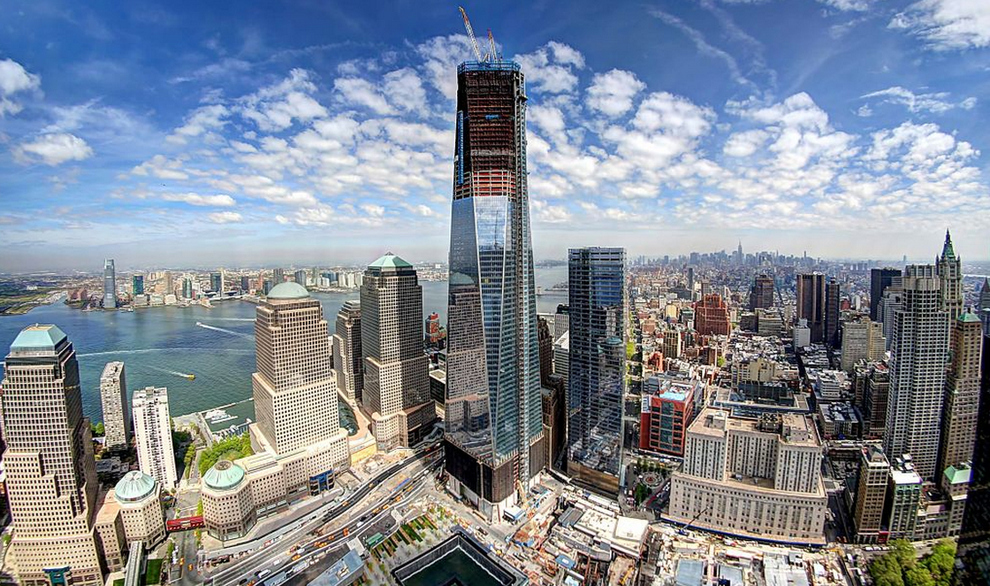






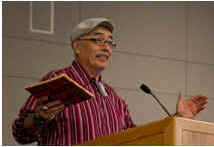
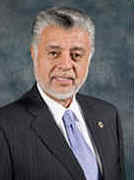

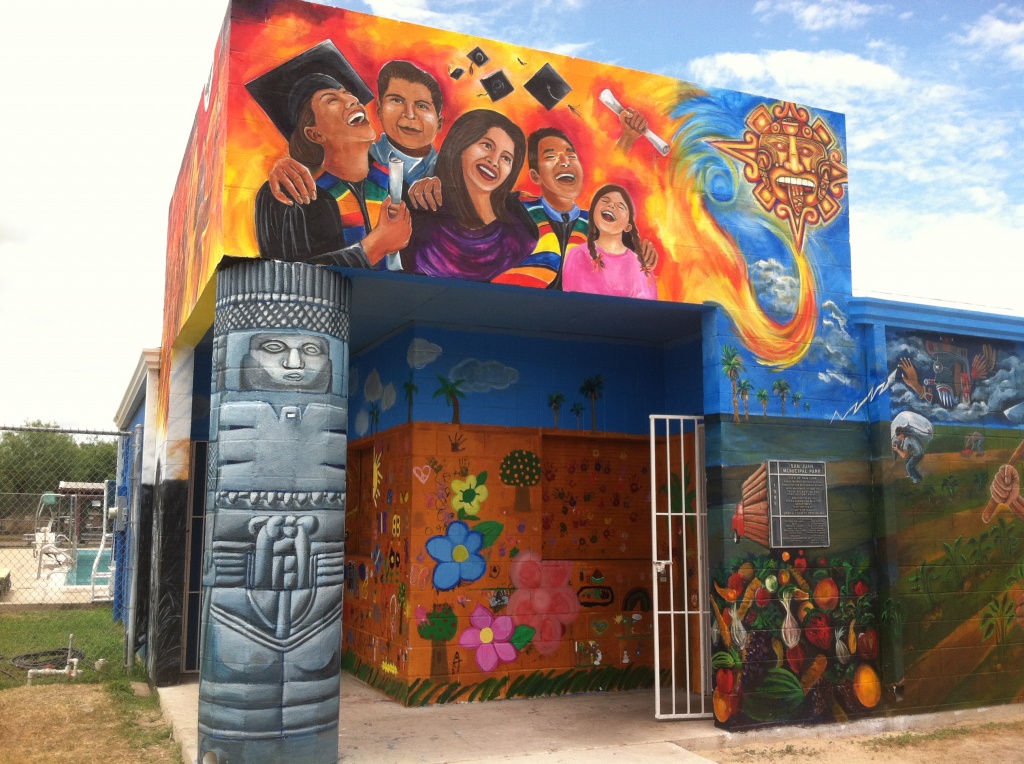
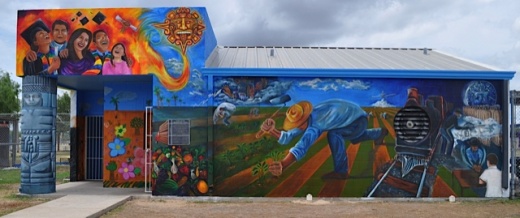
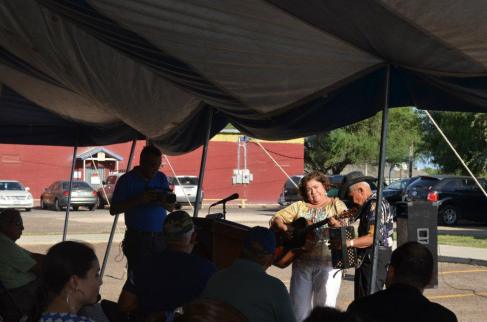
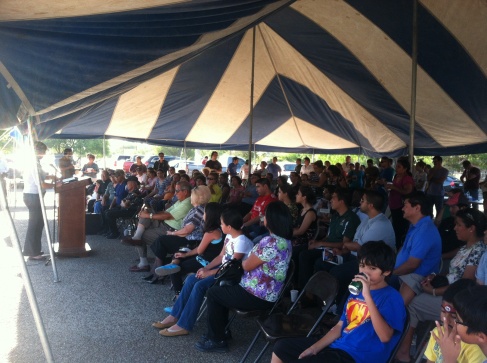
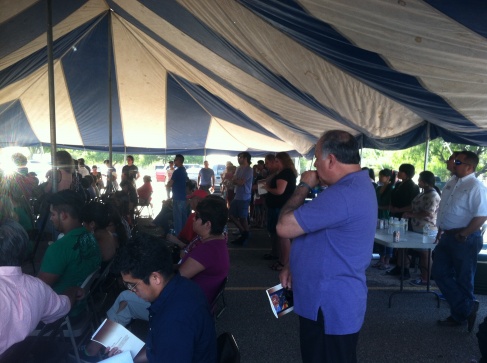
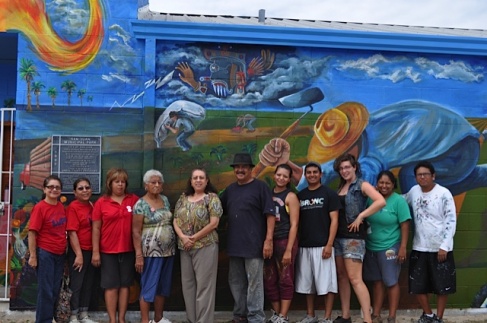 In
conclusion, we would like to thank all those that were involved directly
and indirectly with this mural. The city of San Juan, TX has set forth
an invitation for cultural reflection and affirmation for our community.
UTPA’s Mexican American studies program and faculty have made great
efforts to exposing their students to the importance of inclusion,
cultural awareness, and community engagement. This project is evidence
of their goal. We hope that this is the first of many murals to adorn
our region along the borderlands. As our history and narratives become
continuously pushed to the margins, murals such as the one in San Juan
serve to promote our historical relevance. A final thanks to all the
bracero along both sides of our border and to all the migrant
farmworkers across the Rio Grande Valley and beyond. Without you we do
not have the substance to feed our families. It is our optimistic hope
that this mural honors the work that you do.
In
conclusion, we would like to thank all those that were involved directly
and indirectly with this mural. The city of San Juan, TX has set forth
an invitation for cultural reflection and affirmation for our community.
UTPA’s Mexican American studies program and faculty have made great
efforts to exposing their students to the importance of inclusion,
cultural awareness, and community engagement. This project is evidence
of their goal. We hope that this is the first of many murals to adorn
our region along the borderlands. As our history and narratives become
continuously pushed to the margins, murals such as the one in San Juan
serve to promote our historical relevance. A final thanks to all the
bracero along both sides of our border and to all the migrant
farmworkers across the Rio Grande Valley and beyond. Without you we do
not have the substance to feed our families. It is our optimistic hope
that this mural honors the work that you do.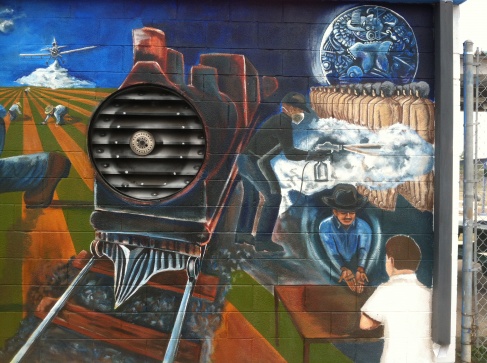
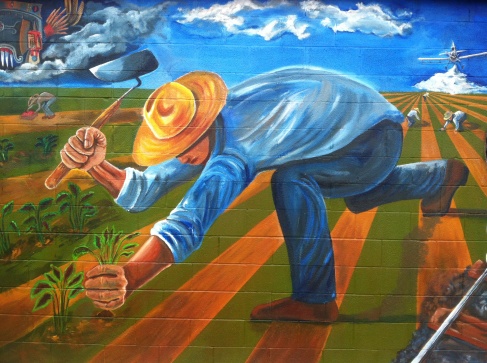
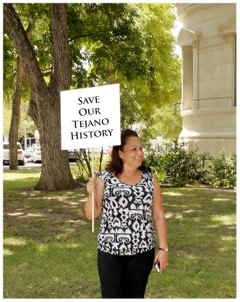
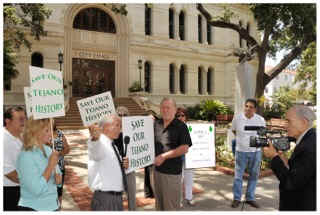
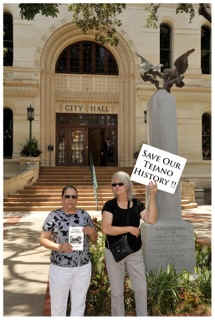
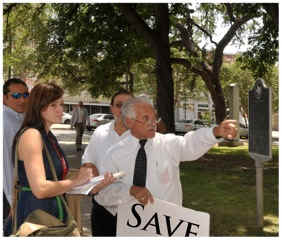
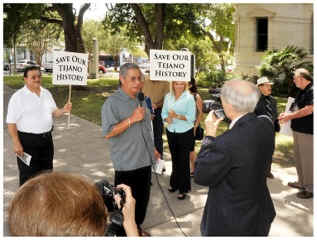
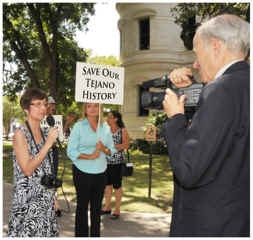
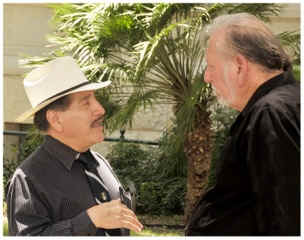
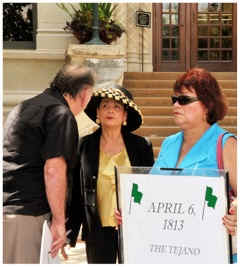
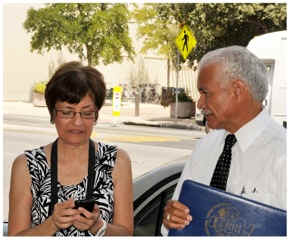
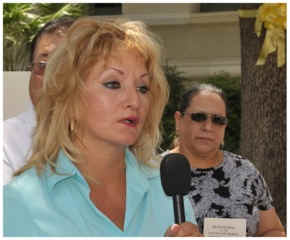
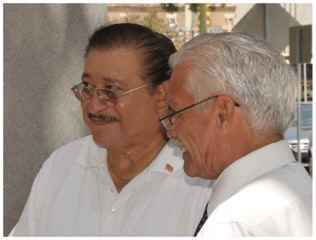
 About
Sara Inés Calderón (
About
Sara Inés Calderón ( There
was a time, not too long ago (relatively speaking), that governments and
the groups of elites that controlled them did not find it necessary to
conscript themselves into wars of disinformation.
There
was a time, not too long ago (relatively speaking), that governments and
the groups of elites that controlled them did not find it necessary to
conscript themselves into wars of disinformation.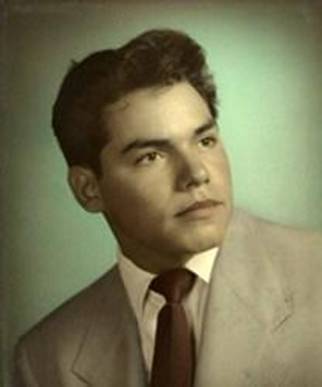

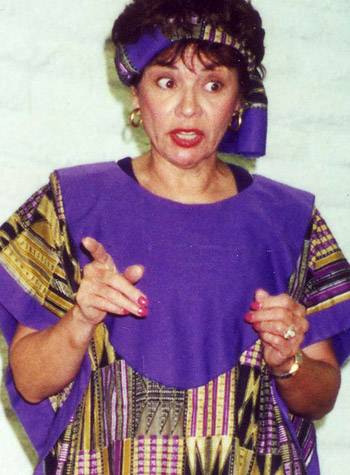 From a thank you note following a recent program:
"Your presentation was perfect! It was exactly what I was
hoping it would be. The stories (and duration) were great for our
group, and I really think ending it with what you said about
storytelling in general was a perfect way to finish. Thank you again
for your willingness to work with our group and to help us out when we
really didn't know exactly what we were looking for. My only problem
is that I'm going to have to find some new entertainment for next
year's luncheon that is as good as this year's was- that's going to be
tough!"
From a thank you note following a recent program:
"Your presentation was perfect! It was exactly what I was
hoping it would be. The stories (and duration) were great for our
group, and I really think ending it with what you said about
storytelling in general was a perfect way to finish. Thank you again
for your willingness to work with our group and to help us out when we
really didn't know exactly what we were looking for. My only problem
is that I'm going to have to find some new entertainment for next
year's luncheon that is as good as this year's was- that's going to be
tough!"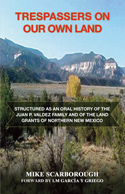
 The son and mother, along with an accomplice, would allegedly enter a
store, grab a cheap item in a big box, empty the contents, and hide it
in the store. They would then fill the box with smaller, more
expensive items, seal it, and pay only the price for the original
inexpensive item. Pollara, with the help of his mother, would
The son and mother, along with an accomplice, would allegedly enter a
store, grab a cheap item in a big box, empty the contents, and hide it
in the store. They would then fill the box with smaller, more
expensive items, seal it, and pay only the price for the original
inexpensive item. Pollara, with the help of his mother, would 




 But
let’s take the argument seriously for a moment more, in
order to deflate points that could become destructive
urban myths; this is how they get started, no? Better to
nip them in the bud before they grow to larger proportions
and start misinforming the grant making community, among
others. Let me turn to another facet of Hladik’s
argument, for he seems very committed to
‘sustainability’ and has the air of someone able to
present serious questions for our weighty consideration.
He asks a good question but then follows through with an
erroneous and preemptive response that reveals how little
he seems to know about farming and agroecosystems:
But
let’s take the argument seriously for a moment more, in
order to deflate points that could become destructive
urban myths; this is how they get started, no? Better to
nip them in the bud before they grow to larger proportions
and start misinforming the grant making community, among
others. Let me turn to another facet of Hladik’s
argument, for he seems very committed to
‘sustainability’ and has the air of someone able to
present serious questions for our weighty consideration.
He asks a good question but then follows through with an
erroneous and preemptive response that reveals how little
he seems to know about farming and agroecosystems: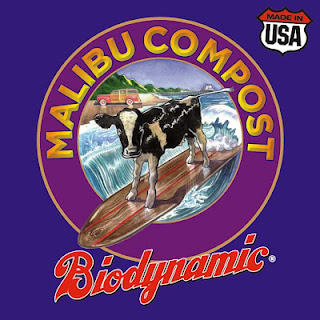
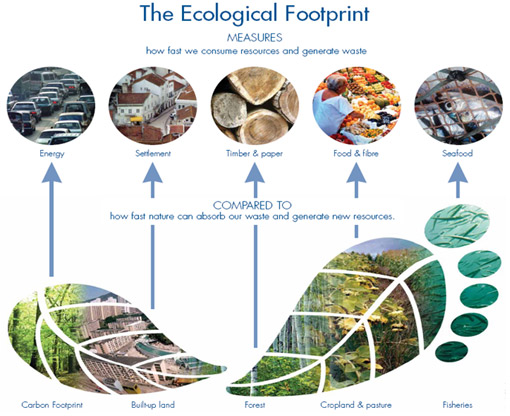

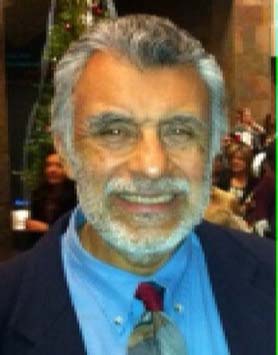


 Goldman
Sachs Launches 10,000 Small Businesses Initiative in Salt Lake City – The
USHCC recently announced its strong support of Goldman Sachs
Goldman
Sachs Launches 10,000 Small Businesses Initiative in Salt Lake City – The
USHCC recently announced its strong support of Goldman Sachs 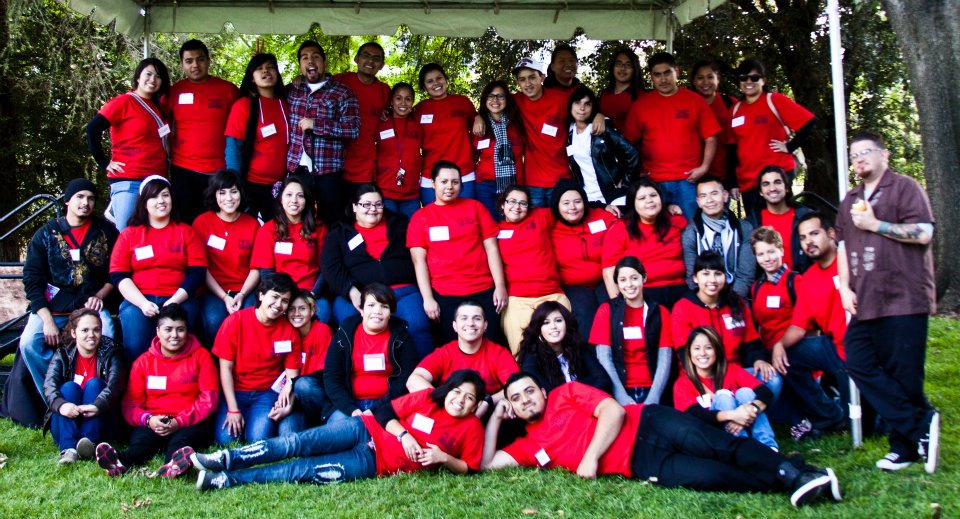
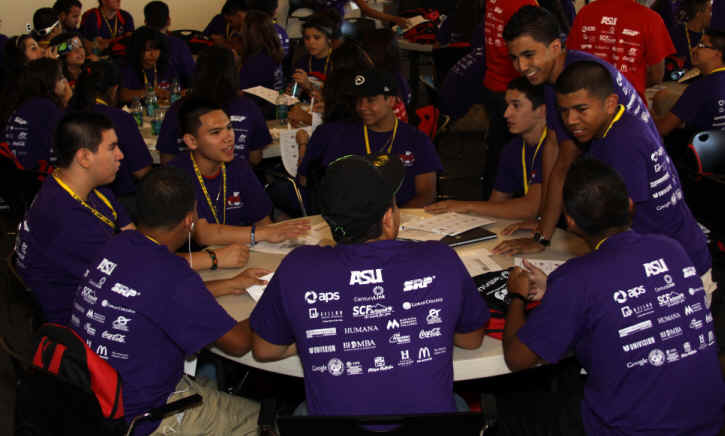
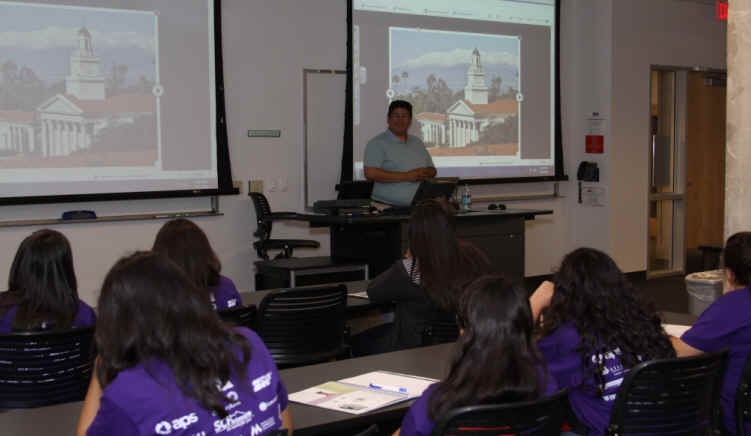

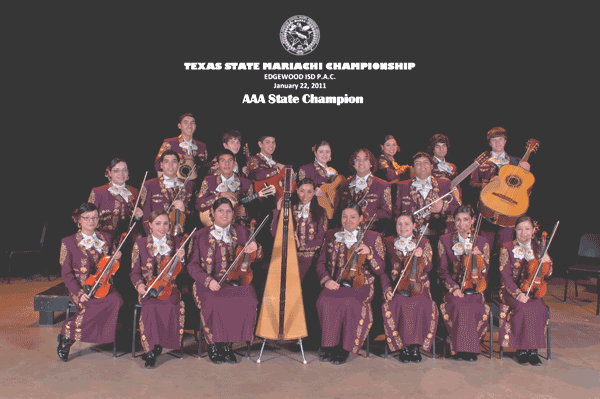
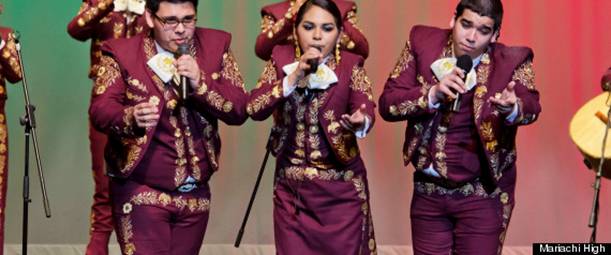
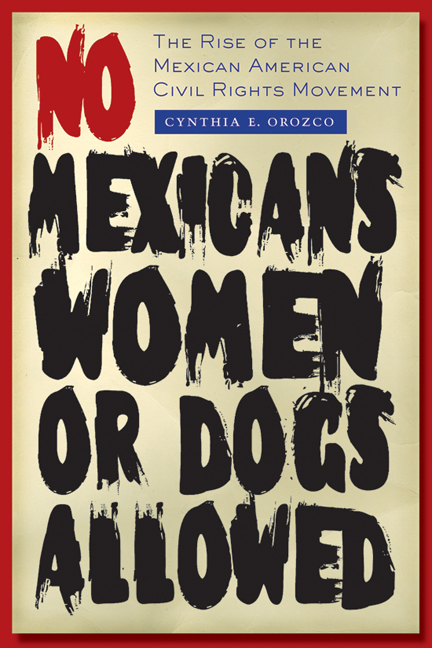
 :
: 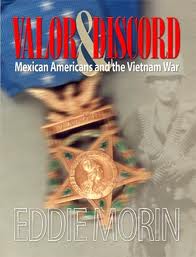

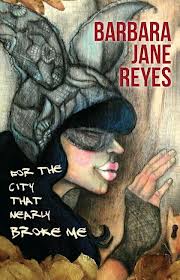
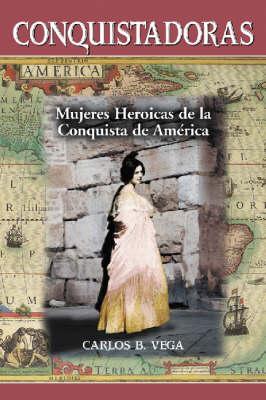
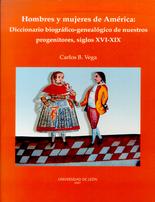
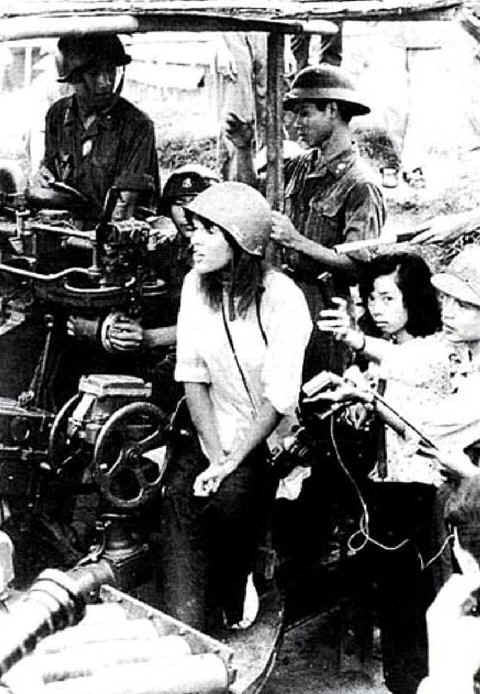 Barbara Walters said: Many died in Vietnam for our freedoms.
Barbara Walters said: Many died in Vietnam for our freedoms. 


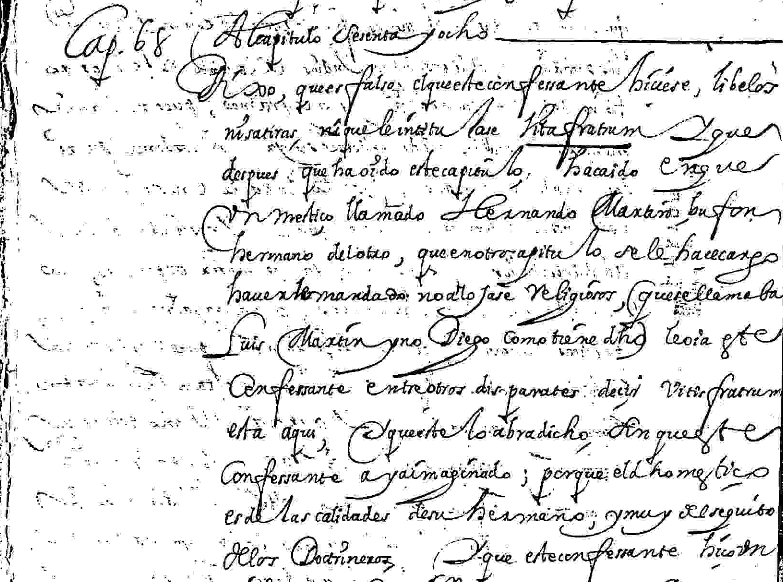
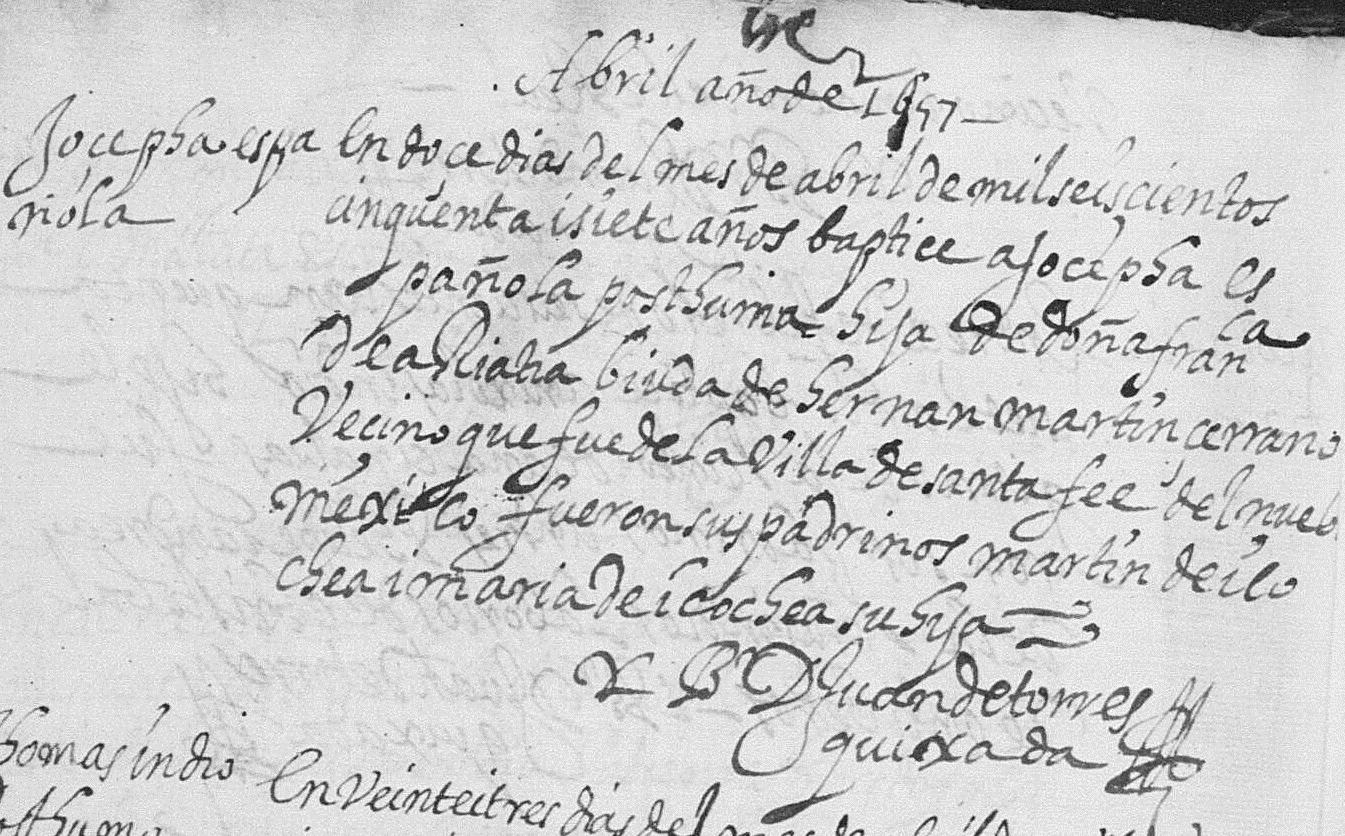
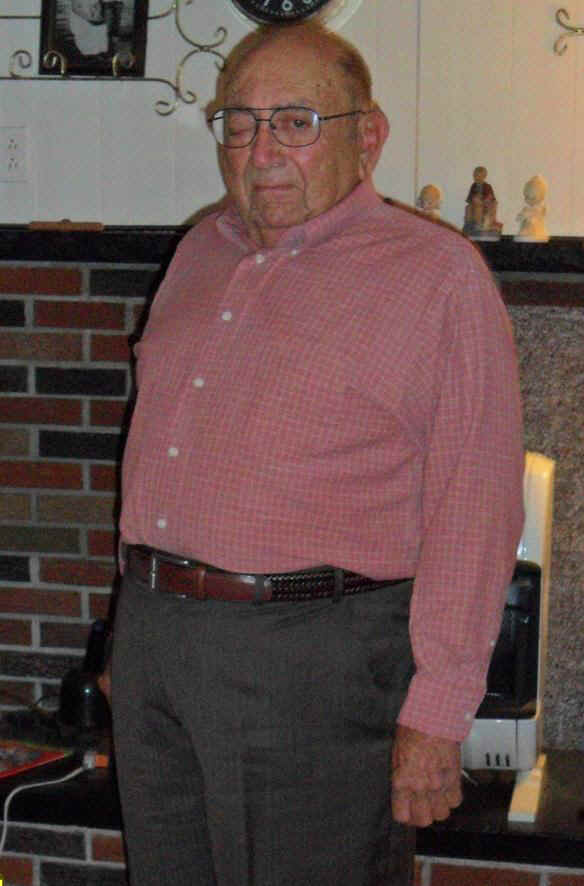
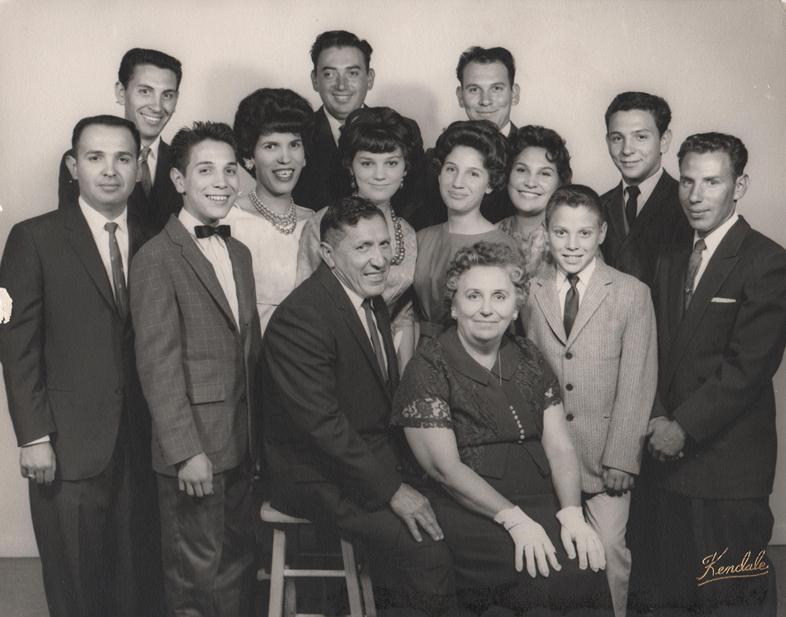

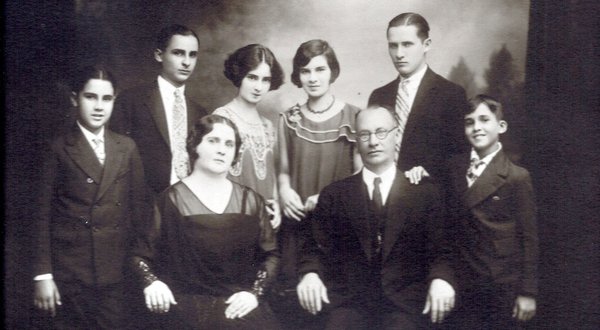


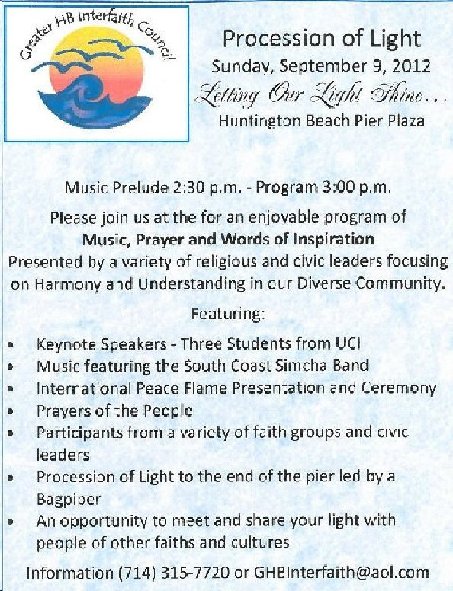
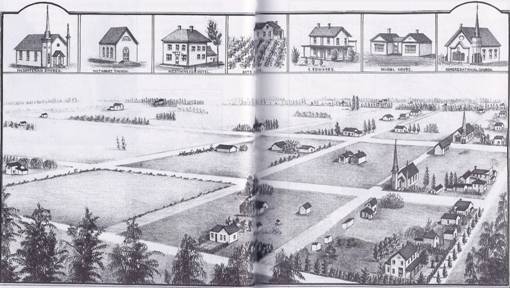
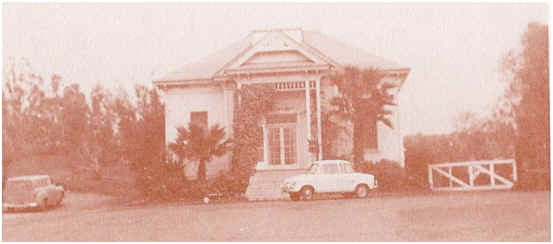
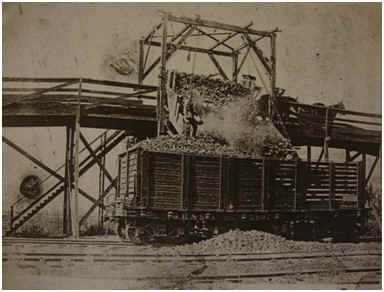
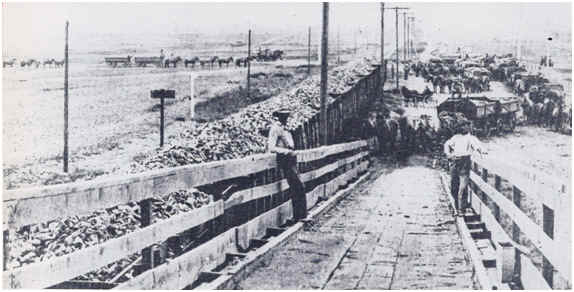
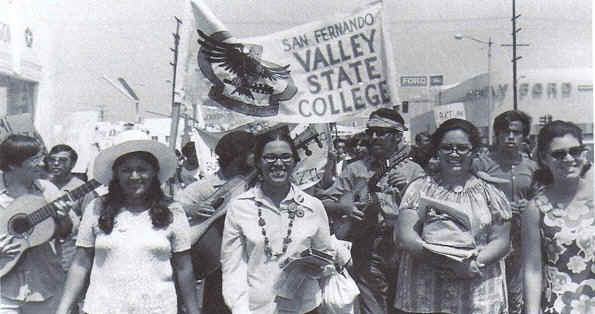
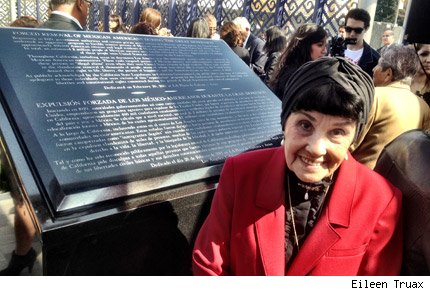 –
the indiscriminate and forced removal of an estimated two million
people of Mexican ancestry to Mexico via an aggressive program
involving both government authorities and certain private sector
entities. Approximately 1.2 million deportees were U.S. citizens.
About 400,000 people were deported from the State of California alone,
with a sizable amount from Los Angeles County. Many families were
never reunited with their loved ones in the U.S., and many were forced
to abandon – or were defrauded of – personal and real property. It
was often sold by local authorities as “payment” for the
transportation expenses incurred during their deportation. As a result
of a motion authored by Sup. Gloria Molina, Los Angeles County issued
a formal apology on Tuesday, February 21, 2012, for the
county’s role in the forced repatriation program.
–
the indiscriminate and forced removal of an estimated two million
people of Mexican ancestry to Mexico via an aggressive program
involving both government authorities and certain private sector
entities. Approximately 1.2 million deportees were U.S. citizens.
About 400,000 people were deported from the State of California alone,
with a sizable amount from Los Angeles County. Many families were
never reunited with their loved ones in the U.S., and many were forced
to abandon – or were defrauded of – personal and real property. It
was often sold by local authorities as “payment” for the
transportation expenses incurred during their deportation. As a result
of a motion authored by Sup. Gloria Molina, Los Angeles County issued
a formal apology on Tuesday, February 21, 2012, for the
county’s role in the forced repatriation program. 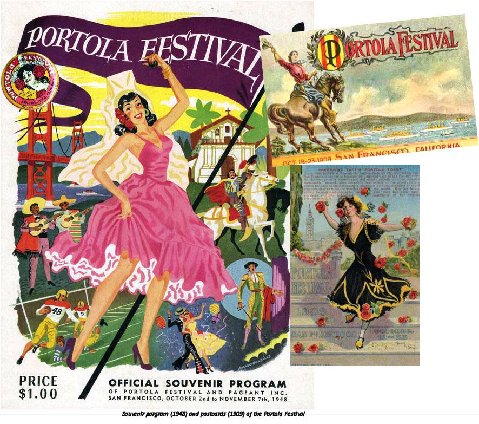 magine, if you can, a celebration of Hispanic heritage that garnered world-wide participation, including from Asia. Imagine the sitting president of the United States coming to that celebration and offering a heartfelt and historic toast to the “over a million visitors”. Imagine daily parades, swimming and auto races, a grand elegant ball. Joining the US Pacific Fleet at anchor in the harbor were warships from Great Britain, Germany, Italy, the Netherlands, and Japan. News accounts boasted, “Never before in the history of the West have armed fighting men of so many nations been seen together at one time” – at least 10,000 soldiers and sailors. Twenty-five nations were represented at the festival’s various festivities. A representative of Spanish history accepted the massive key to the
magine, if you can, a celebration of Hispanic heritage that garnered world-wide participation, including from Asia. Imagine the sitting president of the United States coming to that celebration and offering a heartfelt and historic toast to the “over a million visitors”. Imagine daily parades, swimming and auto races, a grand elegant ball. Joining the US Pacific Fleet at anchor in the harbor were warships from Great Britain, Germany, Italy, the Netherlands, and Japan. News accounts boasted, “Never before in the history of the West have armed fighting men of so many nations been seen together at one time” – at least 10,000 soldiers and sailors. Twenty-five nations were represented at the festival’s various festivities. A representative of Spanish history accepted the massive key to the 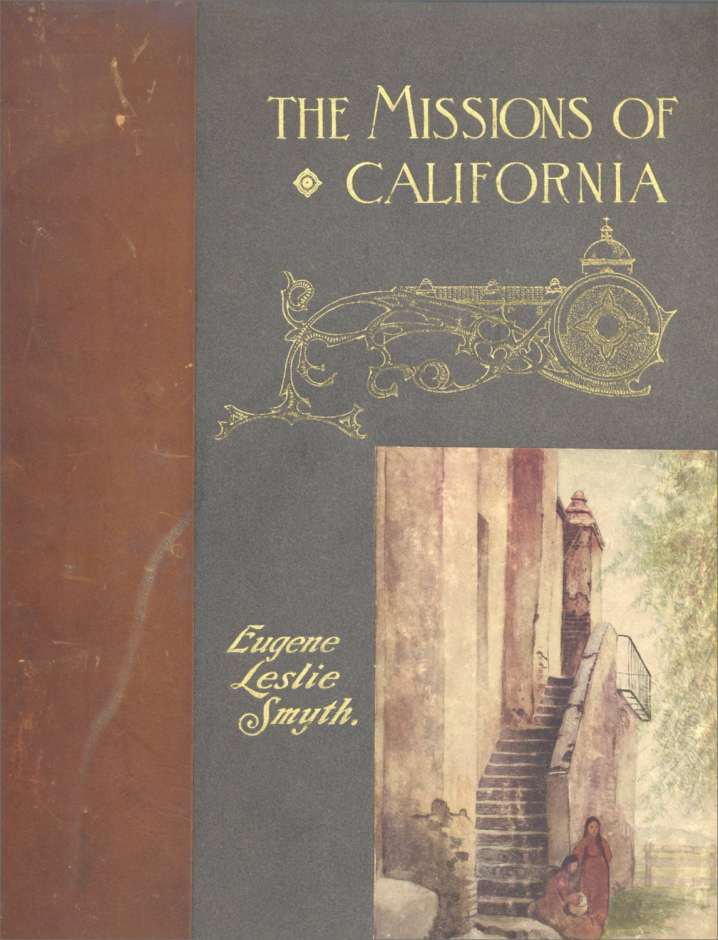
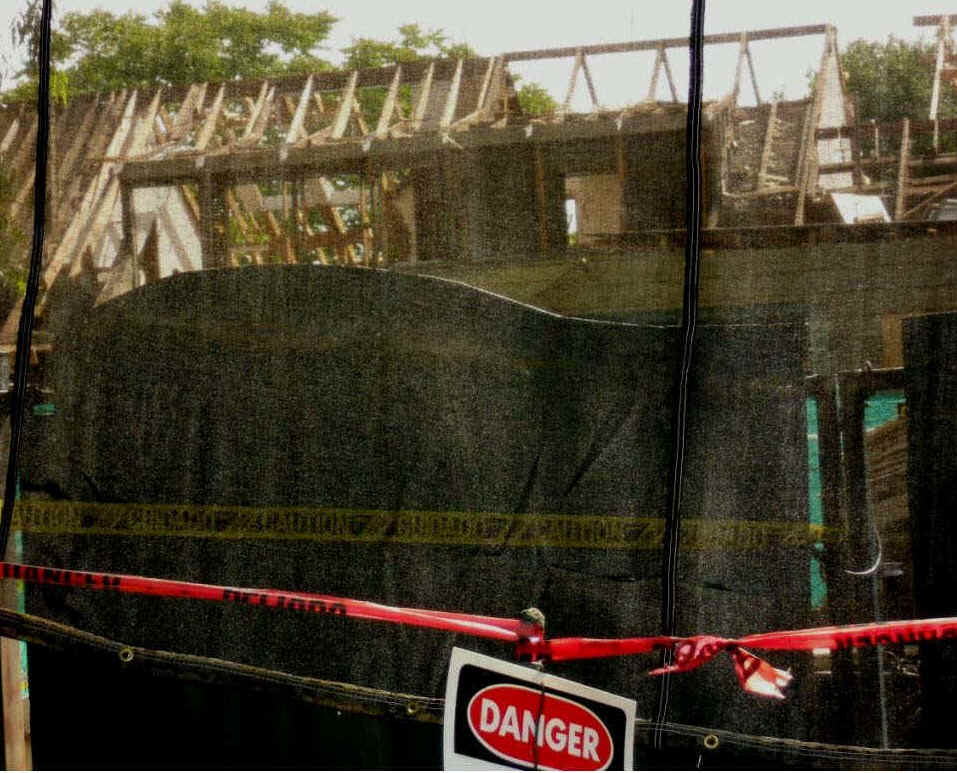
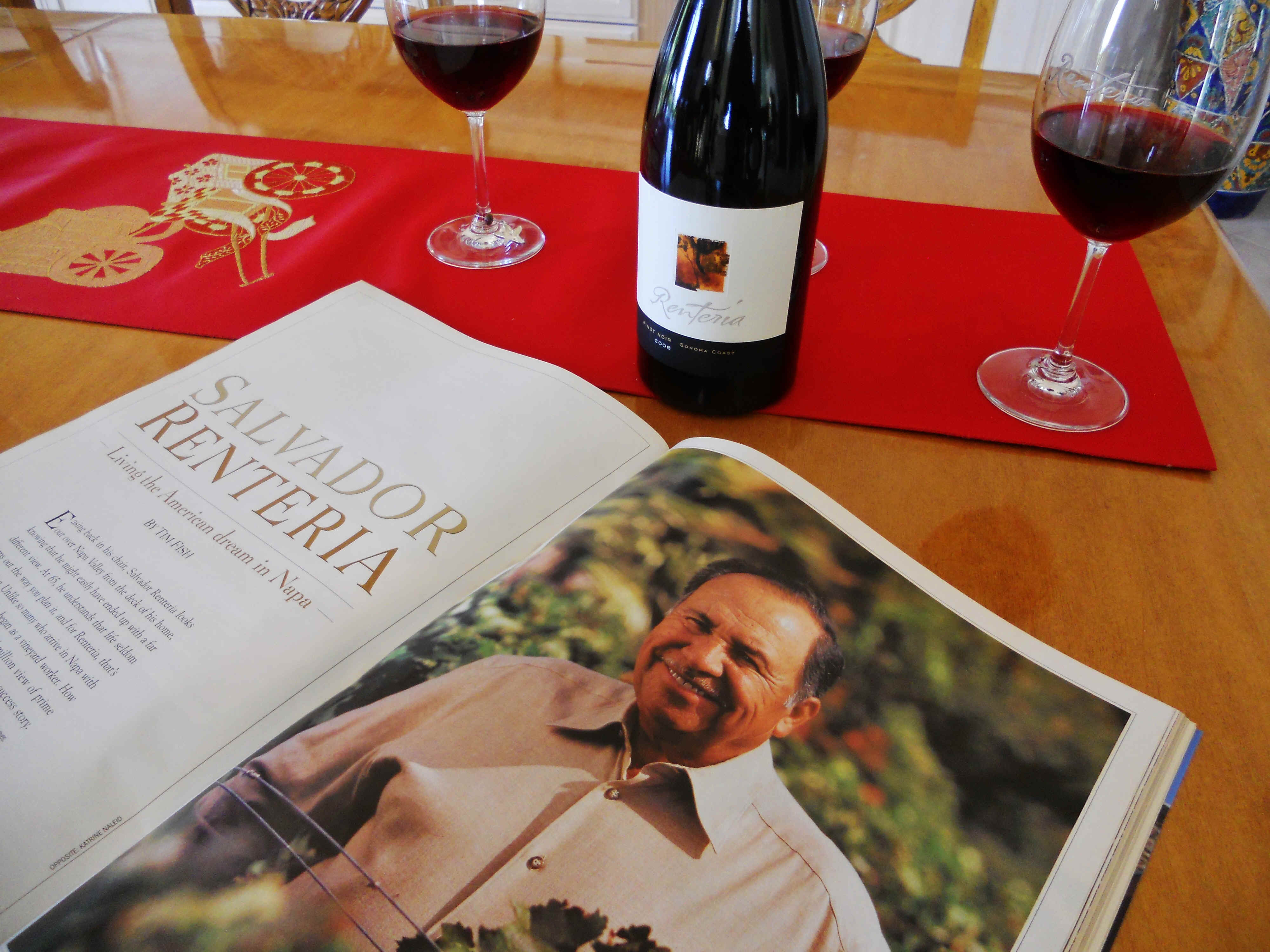
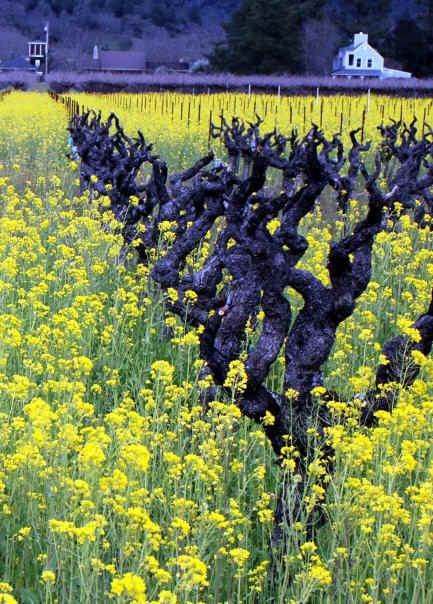 His
track record of success was solid and his reputation for detail and
performance were stellar. Consequently the business grew and gradually
Salvador’s son Oscar who had been working on and off for his dad for
years joined the effort full time in 1989. This was no easy task for
Oscar. Not only did he have the pressure of proving himself but he was
working for his detail oriented dad who had was well respected in the
valley, it was a “double proof” situation.
His
track record of success was solid and his reputation for detail and
performance were stellar. Consequently the business grew and gradually
Salvador’s son Oscar who had been working on and off for his dad for
years joined the effort full time in 1989. This was no easy task for
Oscar. Not only did he have the pressure of proving himself but he was
working for his detail oriented dad who had was well respected in the
valley, it was a “double proof” situation.
 CHICAGO – Susan Kelly Power left the Standing Rock
Indian Reservation in North Dakota 70 years ago. She left rural North
Dakota for the metropolis Chicago when she was only 17 years old."I cleaned houses when I first got here. I went to school at
night. I learned to pull up my bootstraps,” said Power yesterday morning to the Native News Network prior to be
being honored by the Cook County Commission on Women's Issues.
CHICAGO – Susan Kelly Power left the Standing Rock
Indian Reservation in North Dakota 70 years ago. She left rural North
Dakota for the metropolis Chicago when she was only 17 years old."I cleaned houses when I first got here. I went to school at
night. I learned to pull up my bootstraps,” said Power yesterday morning to the Native News Network prior to be
being honored by the Cook County Commission on Women's Issues.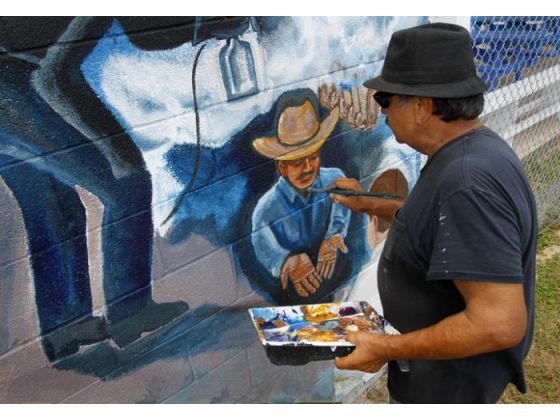


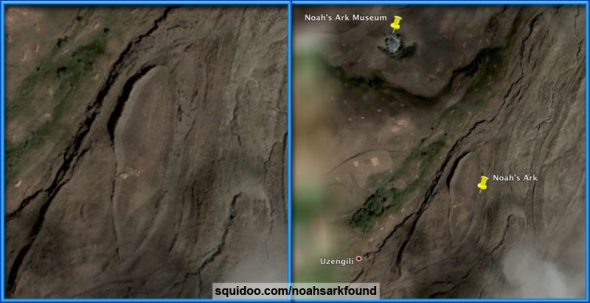
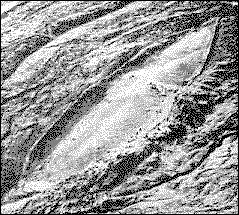
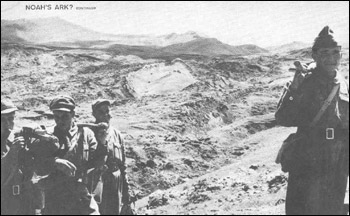
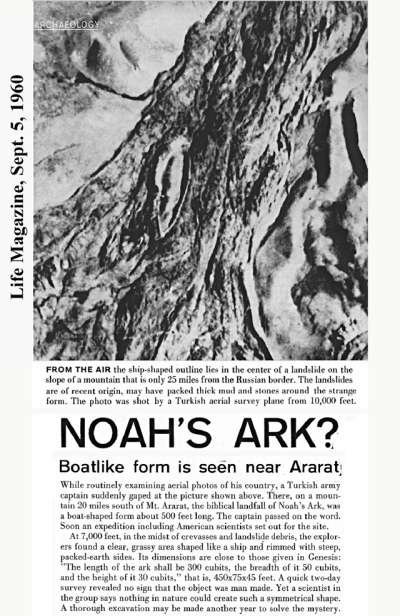
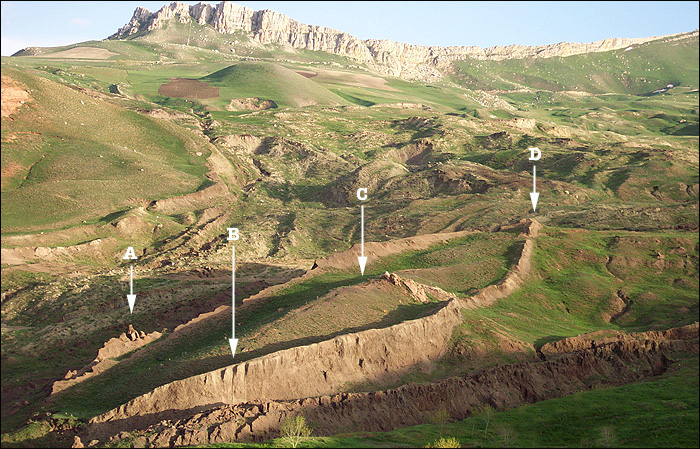
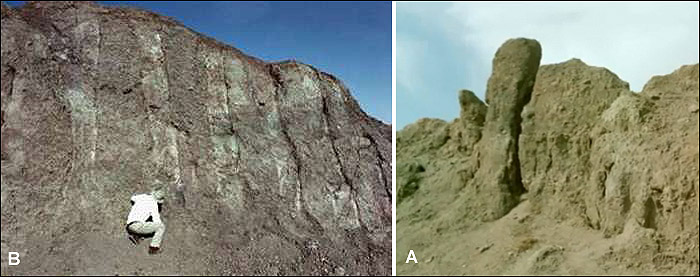

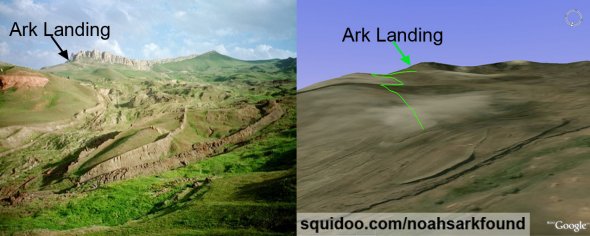




 and
scribal error. "Kopher" wood is correct and means wood
(any wood) that is covered with Kopher. Kopher is
and
scribal error. "Kopher" wood is correct and means wood
(any wood) that is covered with Kopher. Kopher is 